Todd Siler’s ‘neuroimpressionism’ exhibited at Madden Museum
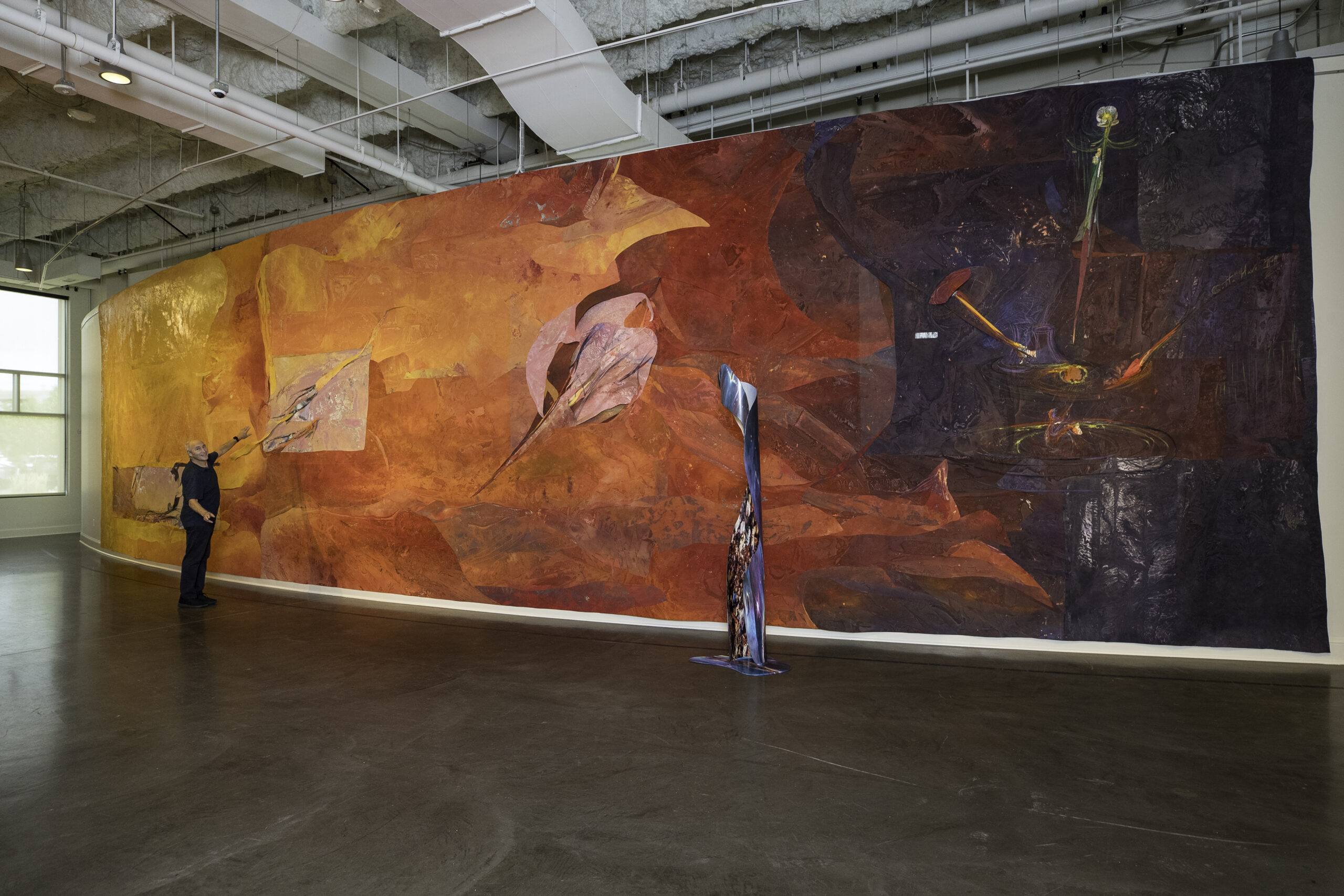
The word “brainiac” might best describe Todd Siler, a Denver- and New York City-based science-artist. Both cerebral and spiritual, part Albert Einstein and part William Blake, in 1986, Siler was the first person to receive an Interdisciplinary Studies PhD in psychology and art from the prestigious Massachusetts Institute of Technology (MIT). Siler’s focus long has been the human brain, and his colorful artworks reflect the complexities of his own gray matter.
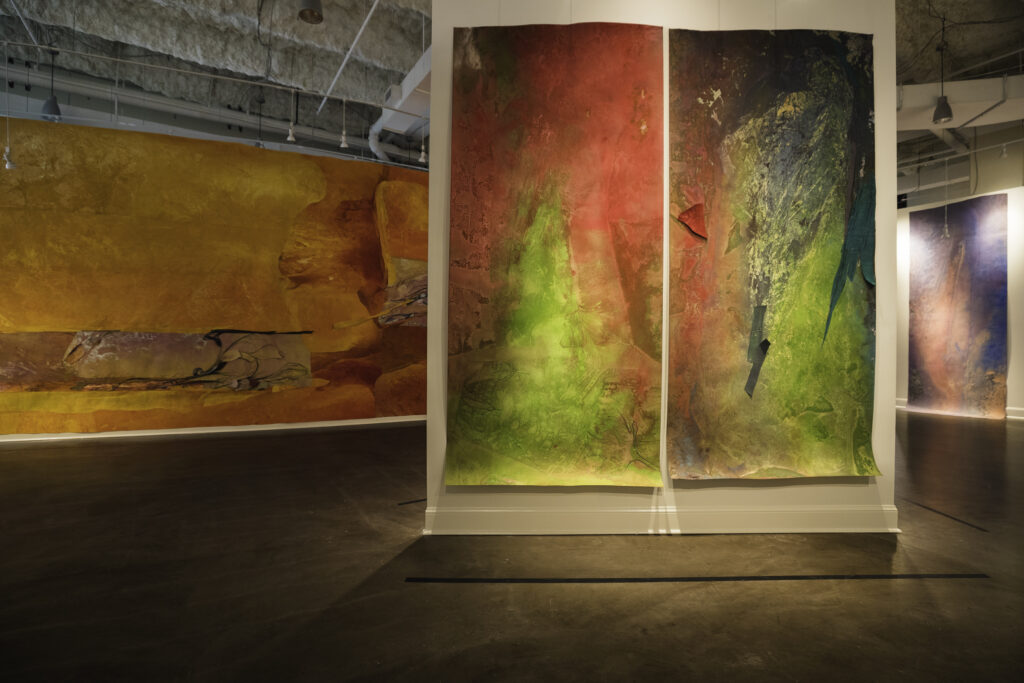
Siler’s exhibition titled “Metaphorming Time” will open Oct. 18 with a free and open-to-the-public artist reception from 5 to 8 p.m. in the Museum of Outdoor Arts (MOA) Madden Gallery at 6363 Fiddler’s Green Circle in Greenwood Village and show through Feb. 13, 2026. Walking through the still-under-installation exhibit with the keenly ever-inquisitive artist was mind-expanding given his astonishing subject matter which he considers “X-rays into the mind.”
Siler said: “Every object I make is meant to link your mind to looking at your own mental process.”
Siler is cosmic and charismatic, intellectually acrobatic. He is soft-spoken with loud ideas. For Siler, a fundamental building block is communication — the essence of his construct: the metaphorm.
The 10,000-square-foot Madden Gallery is expansive enough to show Siler’s large-scale paintings. Massive and luminous, Siler’s abstract works and his metal photo sculptures are compelling without understanding anything about the scientific subtexts of his neocortex — the way a peony is simply lovely to behold without knowing an iota about the complexities of botany.
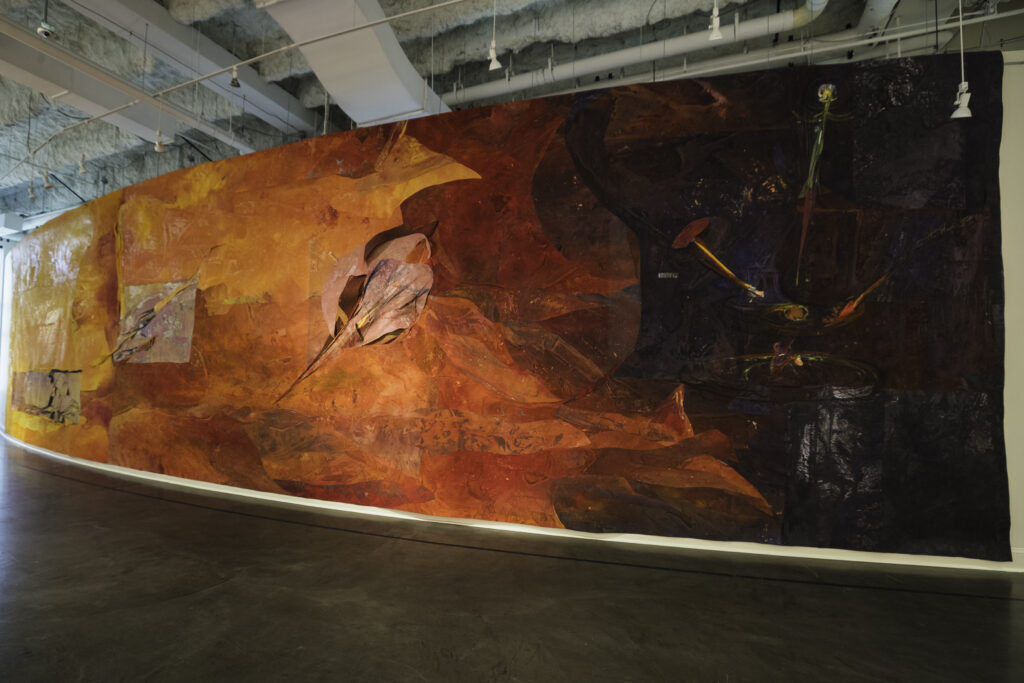
Yet while many artists look to flowers or landscapes or the human figure for inspiration, Siler turns his eye — and his remarkable cerebrum — toward the mind-boggling details of cutting-edge science. Nanoparticles, for instance. Or the continuums of time and space. The cosmos. The nature of consciousness. The origin of intuition.
Or his own quicksilver concepts Siler calls “neurocosmology” or “the psychomirror” or “cerebral fusion.” Siler has created his own lexicon, in addition to his artworks.
In 2011, Siler received the Leonardo da Vinci World Award of Arts from the World Cultural Council. Like da Vinci, Siler is a multidisciplinary Renaissance man. He authored two books: “Think Like a Genius” and “Breaking the Mind Barrier.” MIT patented his printing process. He invented a technique to create his photo sculptures that allows him to bake his images into metal forms he cuts and welds.
“Todd tends to write on his pieces, and it’s his own beautiful handwriting, but it looks a little like Leonardo’s,” said Mary Lee Grisanti, who met Siler when they both attended Smith College. “I’ve known Todd 54 years. Todd is the least compartmentalized person I know,” said Grisanti, who chairs the film department at the School of Visual Arts in New York City.
Grisanti’s art collection includes works by Siler, and Grisanti has observed his progression.
“He has an understanding of things on a molecular and atomic level that has totally inspired him. As he went deeper into science, science found its way into his art. He didn’t change, he just developed, but it’s still pure Todd.”
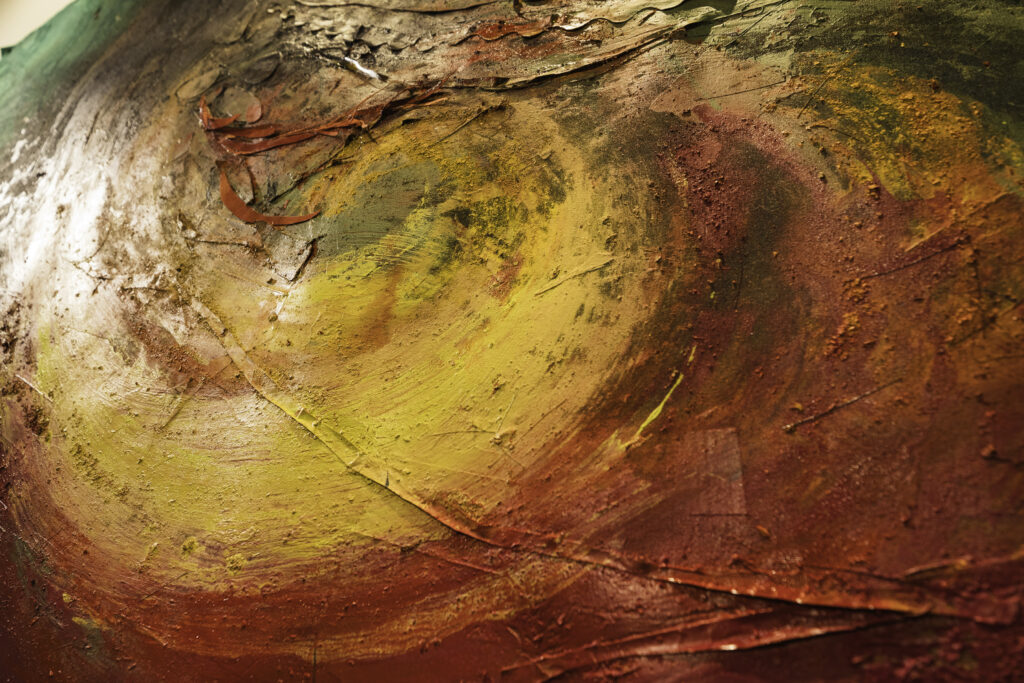
With the tagline, “The past is always present in the future,” the exhibit presents one of Siler’ massive works titled “Ascension,” a 15-foot-by-60-foot painted collage commissioned for the lobby of Palazzo Verdi, the building housing the gallery. Siler originally installed “Ascension” vertically, but it now flows horizontally, a chiaroscuro illustrating how human beings evolved from the molecules of primal elements.
“We use ancient cultures. We’re building on concepts. The past, the present, the future — they’re intertwined,” Siler said.
‘There’s no such thing as luck. There is only foolishness and wisdom.’
Siler is not only intelligent, but also wise. He’s the sort of man whose inner machinations seem almost visible in his frontal lobe when he speaks passionately about his art, the inner gears cranking his cerebellum’s engine of ingenuity. And though as he explains the scientific profundity of his art, one’s eyes might glaze over, they likely also will have stars in them because Siler takes on some of the most complex questions of our universe. He wrote his dissertation on the source of intuition as he pinpointed it in what he calls “the heart of the brain.” He has spent nearly 50 years of his career trying to sort out the same weighty, perhaps unanswerable questions.
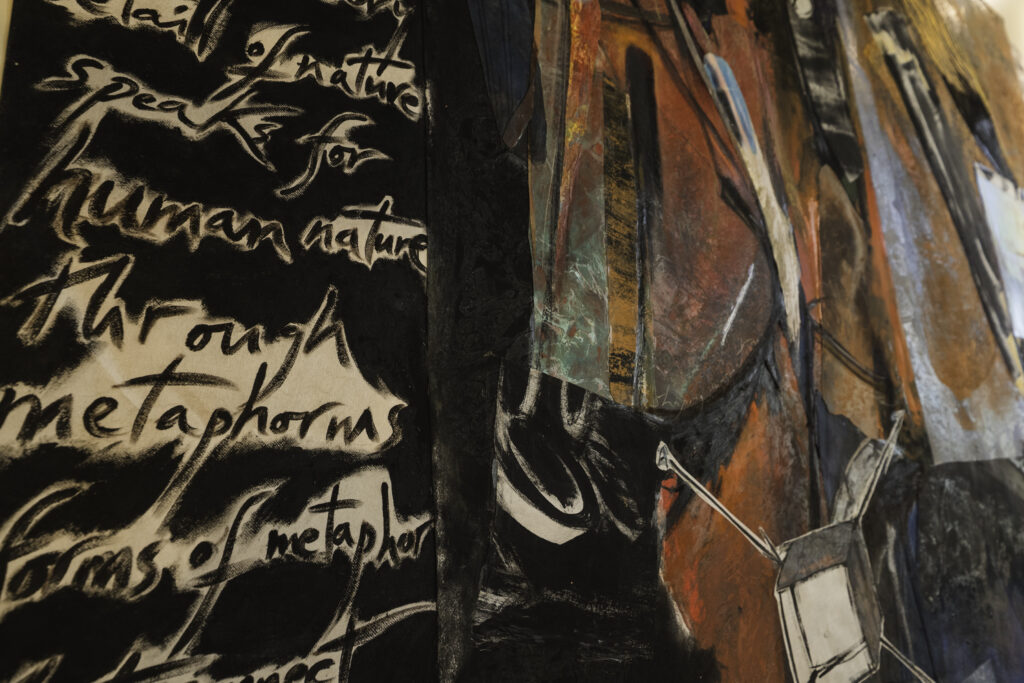
“I wanted to learn about the brain through art,” he said, pointing out the textures in his paintings that suggest neurological constructs.
“When people ask ‘Where’s your studio?’ I say my brain is an R&D lab — always open,” said Siler, who grasps the mind and universe in 11 dimensions.
‘Knowledge is understanding your mistakes. Wisdom is learning from them.’
Siler’s large-scale works pose big questions, and looking at his installation inspired by nanoparticles, he unleashed a litany of them: “We need to stop and question ourselves collectively. What do we need to understand to sustain humankind’s existence in the universe? What is our relationship to tech? How do we foster global cooperation? What does sustainable living look and feel like? Where are we going? How do we take the sum of human knowledge out – not just to our planet? How do we redefine progress? How can we best collaborate in the age of artificial intelligence? What can we do best of all by working together? And this quiet question, ‘What if we chose not to work together?’”
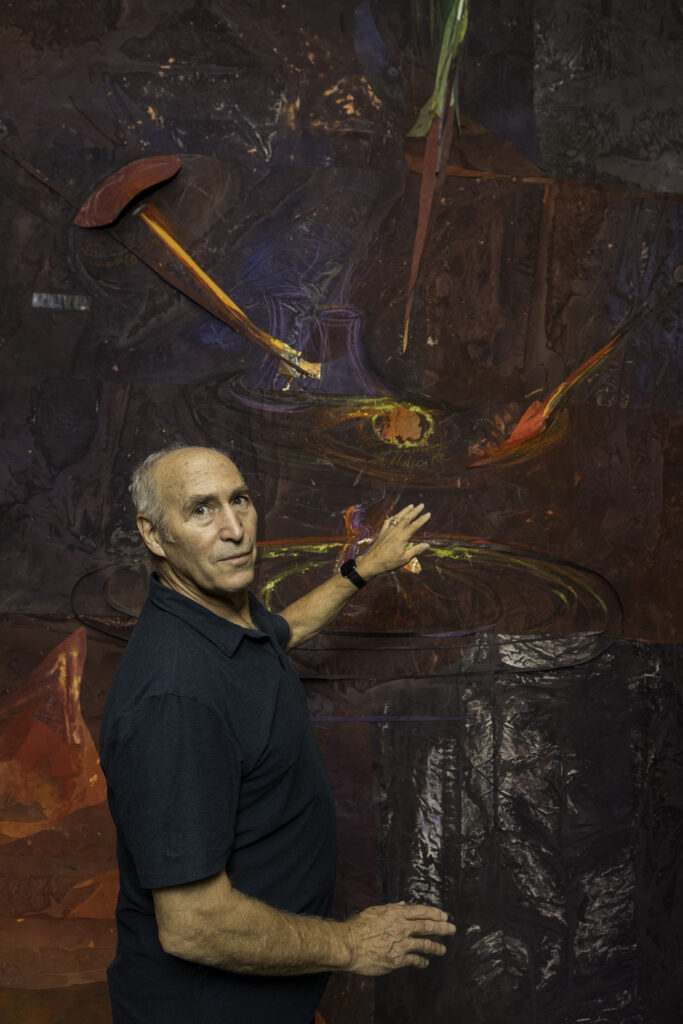
He explained his work “Gambling on Earth” in a nutshell: “I always say, ‘Money may make the world go ‘round, but only love keeps it around.’ And it’s not the love of power,” Siler said. “This is like a roulette table, especially when we disregard our natural environment.”
‘Nature invents. Human nature innovates.’
The natural environment is tantamount for Siler. When he’s not making art, Siler might likely be walking in the woods or sitting near a stream or enjoying an occasional cigar near a bonfire under a star-spangled sky. Siler draws inspiration from nature. Moreover, nature concerns him, and he takes a protective approach to our imperiled planet.
“We are absolutely so entwined in nature,” he said. “We literally have to understand our connection with the whole of nature to understand our impact and the way we’re using resources.”
Siler’s installation at Denver Museum of Nature & Science, titled “The History of Conflict Resolution,” emphasizes the need for human communication and cooperation. “If we can’t get that right, all the tech in the world will be for naught. It has to come down to understanding and awareness of different experiences of life or we’re forever locked in human conflict.”
Siler exhibits globally and has been represented by Ronald Feldman Fine Arts in New York City since 1980.
Robert Root-Bernstein, emeritus professor of physiology at Michigan State University and a MacArthur Fellow, met Siler in 1989.
“I was absolutely gobsmacked by Todd’s artwork. Here was a guy trained at MIT with a dual PhD in art and neuroscience whose artwork was about how we think and whose writing delved right into the deepest mysteries of the creative process,” said Root-Bernstein.
A colleague and friend who has collected about a dozen of Siler’s artworks, Root-Bernstein added: “We were both universalists trying to figure out how to integrate the best insights and inventions of the human race by bringing arts and sciences back into harmony in the tradition of great Renaissance figures.”
Root-Bernstein sees Siler’s art both as a visual cheerleader, of sorts, and a cautionary tale.
“Todd constantly asks how much better we could do if we could harness all the energy of human creativity to focus on the world’s most difficult challenges. Imagine, he asks us, what kind of innovative explosion would result from the fusion of mental energy that all of us have but so few of us share,” Root-Berstein said. “Todd’s art embodies all of this and more, a call to each one of us to not only see new possibilities but to join others in finding collaborative ways to implement them. Todd’s artwork is not something you just look at but something that makes you think and act in new, more creative ways.”
Taking in Siler’s exhibition at the Madden Gallery is akin to a quick visual art course hybridizing neurology, psychology, cosmology and philosophy. Siler’s philosophical musings are colorful, yet also dark. Our perilous world activates his nervous system, giving rise to anxiety.
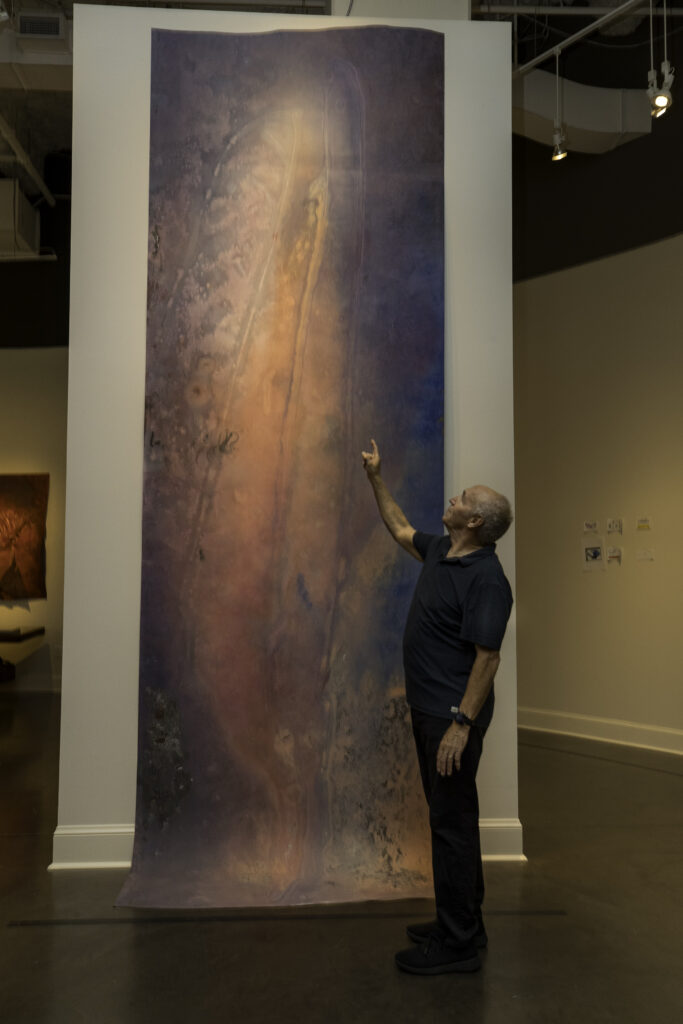
“We are at a fragile inflection point. If we still are at war with one another, still at a level of disconnect, the stakes are so high with all the tech that can do us in,” Siler said. “This show is getting people to stand back a moment and think about their actions and behaviors and how we’re all on this planet and we have to work together in a unique way now. We have that opportunity now, and we can’t blow it. We really can’t blow it. I am on high alert, but I have,” Siler added, using one of his favorite metaphorms, “‘hopetimism.’”
More details at infor@moaonline.org
Get OutThere
Signup today for free and be the first to get notified on new updates.






